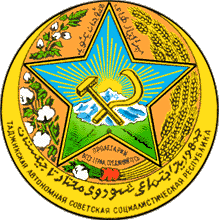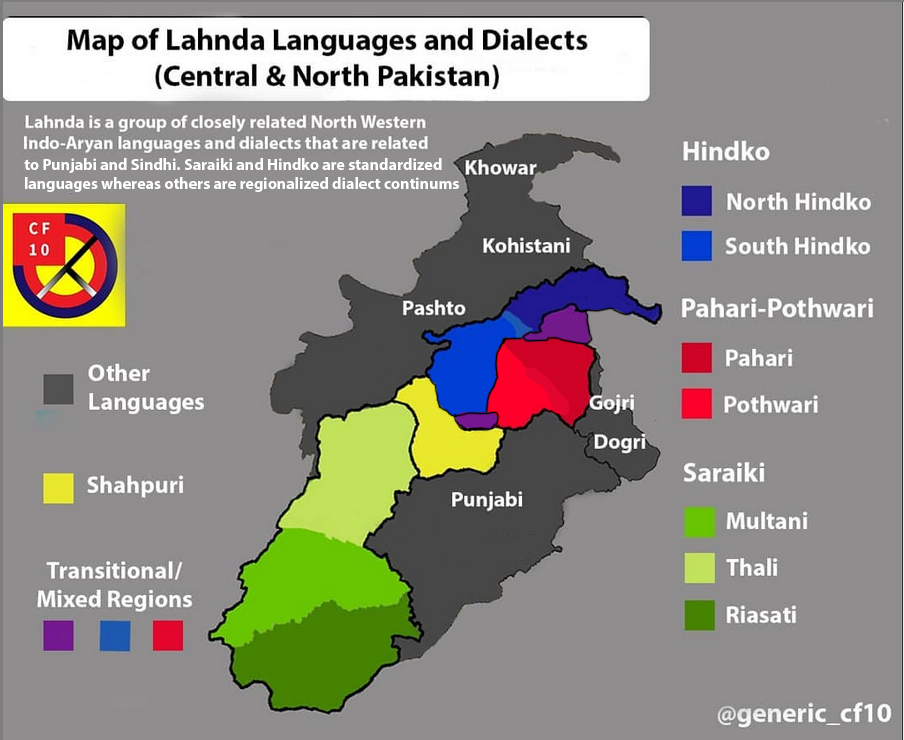|
Nastaʿlīq
''Nastaliq'' (; fa, , ), also romanized as ''Nastaʿlīq'', is one of the main calligraphic hands used to write the Perso-Arabic script in the Persian and Urdu languages, often used also for Ottoman Turkish poetry, rarely for Arabic. ''Nastaliq'' developed in Iran from '' naskh'' beginning in the 13th century and remains very widely used in Pakistan, Iran, Afghanistan and as a minority script in India and other countries for written poetry and as a form of art. History The name ''nastaliq'' "is a contraction of the Persian , meaning a hanging or suspended '' naskh''". Virtually all Safavid authors (like Dust Muhammad or Qadi Ahmad) attributed the invention of to Mir Ali Tabrizi, who lived at the end of the 14th and the beginning of the 15th century. That tradition was questioned by Elaine Wright, who traced evolution of ''nastaliq'' in 14th century Iran and showed how it developed gradually among scribes in Shiraz. Moreover, according to her studies ''nastaliq'' has its o ... [...More Info...] [...Related Items...] OR: [Wikipedia] [Google] [Baidu] |
Saraiki Language
Saraiki ( '; also spelt Siraiki, or Seraiki) is an Indo-Aryan language of the Lahnda group, spoken by 26 million people primarily in the south-western half of the province of Punjab in Pakistan. It was previously known as Multani, after its main dialect. Saraiki has partial mutual intelligibility with Standard Punjabi, and it shares with it a large portion of its vocabulary and morphology. At the same time in its phonology it is radically different (particularly in the lack of tones, the preservation of the voiced aspirates and the development of implosive consonants), and has important grammatical features in common with the Sindhi language spoken to the south. The Saraiki language identity arose in the 1960s, encompassing more narrow local earlier identities (like Multani, Derawi or Riasati), and distinguishing itself from broader ones like that of Punjabi. Name The present extent of the meaning of ' is a recent development, and the term most probably gained its curr ... [...More Info...] [...Related Items...] OR: [Wikipedia] [Google] [Baidu] |
Dari Persian
Dari (, , ), also known as Dari Persian (, ), is the Variety (linguistics), variety of the Persian language spoken in Afghanistan. Dari is the term officially recognised and promoted since 1964 by the Politics of Afghanistan, Afghan government for the Persian language,Lazard, G.Darī – The New Persian Literary Language", in ''Encyclopædia Iranica'', Online Edition 2006. hence it is known as Afghan Persian or Eastern Persian in many Western sources. As Professor Nile Green remarks "the impulses behind renaming of Afghan Persian as Dari were more nationalistic than linguistic" in order to create an Afghan state narrative. Apart from a few basics of vocabulary, there is little difference between formal written Persian of Afghanistan and Iran. The term "Dari" is officially used for the characteristic spoken Persian of Afghanistan, but is best restricted to formal spoken registers. Persian-speakers in Afghanistan prefer to still call their language “Farsi,” while Pashto-s ... [...More Info...] [...Related Items...] OR: [Wikipedia] [Google] [Baidu] |
Persian Language
Persian (), also known by its endonym Farsi (, ', ), is a Western Iranian language belonging to the Iranian branch of the Indo-Iranian subdivision of the Indo-European languages. Persian is a pluricentric language predominantly spoken and used officially within Iran, Afghanistan, and Tajikistan in three mutually intelligible standard varieties, namely Iranian Persian (officially known as ''Persian''), Dari Persian (officially known as ''Dari'' since 1964) and Tajiki Persian (officially known as ''Tajik'' since 1999).Siddikzoda, S. "Tajik Language: Farsi or not Farsi?" in ''Media Insight Central Asia #27'', August 2002. It is also spoken natively in the Tajik variety by a significant population within Uzbekistan, as well as within other regions with a Persianate history in the cultural sphere of Greater Iran. It is written officially within Iran and Afghanistan in the Persian alphabet, a derivation of the Arabic script, and within Tajikistan in the Tajik alphabet, a der ... [...More Info...] [...Related Items...] OR: [Wikipedia] [Google] [Baidu] |
Punjabi Language
Punjabi (; ; , ), sometimes spelled Panjabi, is an Indo-Aryan language of the Punjab region of Pakistan and India. It has approximately 113 million native speakers. Punjabi is the most widely-spoken first language in Pakistan, with 80.5 million native speakers as per the 2017 census, and the 11th most widely-spoken in India, with 31.1 million native speakers, as per the 2011 census. The language is spoken among a significant overseas diaspora, particularly in Canada, the United States, and the United Kingdom. In Pakistan, Punjabi is written using the Shahmukhi alphabet, based on the Perso-Arabic script; in India, it is written using the Gurmukhi alphabet, based on the Indic scripts. Punjabi is unusual among the Indo-Aryan languages and the broader Indo-European language family in its usage of lexical tone. History Etymology The word ''Punjabi'' (sometimes spelled ''Panjabi'') has been derived from the word ''Panj-āb'', Persian for 'Five Waters', referring to the ... [...More Info...] [...Related Items...] OR: [Wikipedia] [Google] [Baidu] |
Balti Language
Balti (Nastaʿlīq script: , Tibetan script: སྦལ་ཏི།, ) is a Tibetic language natively spoken by the ethnic Balti people in the Baltistan region of Gilgit−Baltistan, Pakistan, Nubra Valley of the Leh district and in the Kargil district of Ladakh, India. The language differs from Standard Tibetan; many sounds of Old Tibetan that were lost in Standard Tibetan are retained in the Balti language. It also has a simple pitch accent system only in multi-syllabic words while Standard Tibetan has a complex and distinct pitch system that includes tone contour. Demographics and distribution Balti is spoken in most parts of Gilgit-Baltistan in Pakistan, Kargil and Nubra Ladakh in India. According to the Gilgit-Baltistan Scouts, Balti is mostly spoken in Skardu, Shigar, Gultari, Ghanche, Roundu and Kharmang parts of Gilgit-Baltistan. In the twin districts of Ladakh region (Kargil and Leh) it is spoken in Kargil city and its surrounding villages like Hardass, Lato, Kark ... [...More Info...] [...Related Items...] OR: [Wikipedia] [Google] [Baidu] |
Iranian Persian
Iranian Persian, Western Persian or Western Farsi, natively simply known as Persian (, ), refers to the varieties of the modern Persian language spoken in Iran and by minorities in neighboring countries, as well as by Iranian communities throughout the world. These are mutually intelligible with other varieties of Persian, including Afghanistan's Dari and Tajikistan's Tajik. Name Iran's national language has been called, apart from ''Persian'' or ''Farsi'', by names such as ''Iranian Persian'', ''Western Persian'' and ''Western Farsi'', exclusively. Officially, the national language of Iran is designated simply as ''Persian'' (, ). Constitution of the Islamic Republic of Iran: Chapter II, Article 15: "The official language and script of Iran, the lingua franca of its people, is Persian. Official documents, correspondence, and texts, as well as text-books, must be in this language and script. However, the use of regional and tribal languages in the press and mass media, as well ... [...More Info...] [...Related Items...] OR: [Wikipedia] [Google] [Baidu] |
Tajik Language
Tajik (Tajik: , , ), also called Tajiki Persian (Tajik: , , ) or Tajiki, is the variety of Persian spoken in Tajikistan and Uzbekistan by Tajiks. It is closely related to neighbouring Dari with which it forms a continuum of mutually intelligible varieties of the Persian language. Several scholars consider Tajik as a dialectal variety of Persian rather than a language on its own. The popularity of this conception of Tajik as a variety of Persian was such that, during the period in which Tajik intellectuals were trying to establish Tajik as a language separate from Persian, prominent intellectual Sadriddin Ayni counterargued that Tajik was not a "bastardised dialect" of Persian.Shinji ldoTajik Published by UN COM GmbH 2005 (LINCOM EUROPA) The issue of whether Tajik and Persian are to be considered two dialects of a single language or two discrete languages has political sides to it. By way of Early New Persian, Tajik, like Iranian Persian and Dari Persian, is a continuation of Midd ... [...More Info...] [...Related Items...] OR: [Wikipedia] [Google] [Baidu] |
Shina Language
Shina ( ) is an Indo-Aryan language spoken by the Shina people. In Pakistan, Shina is the major language in Gilgit-Baltistan spoken by an estimated 1,146,000 people living mainly in Gilgit-Baltistan and Kohistan.{{Cite book , last1=Saxena , first1=Anju , url=https://books.google.com/books?id=g8DAmULPQU0C&dq=shina+gilgit+ladakh&pg=PA137 , title=Lesser-Known Languages of South Asia: Status and Policies, Case Studies and Applications of Information Technology , last2=Borin , first2=Lars , date=2008-08-22 , publisher=Walter de Gruyter , isbn=978-3-11-019778-5 , pages=137 , language=en , quote=Shina is an Indo-Aryan language of the Dardic group, spoken in the Karakorams and the western Himalayas: Gilgit, Hunza, the Astor Valley, the Tangir-Darel valleys, Chilas and Indus Kohistan, as well as in the upper Neelam Valley and Dras. Outliers of Shina are found in Ladakh (Brokskat), Chitral (Palula and Sawi), Swat (Ushojo; Bashir 2003: 878) and Dir (Kalkoti). A small community of Shina sp ... [...More Info...] [...Related Items...] OR: [Wikipedia] [Google] [Baidu] |
Kashmiri Language
Kashmiri () or Koshur (, /kəːʃur/) is an Indo-Aryan language spoken by around 7 million Kashmiris of the Kashmir region, primarily in the Indian union territory of Jammu and Kashmir. In 2020, the Parliament of India passed a bill to make Kashmiri an official language of Jammu and Kashmir along with Dogri, Hindi, Urdu and English. Kashmiri is also among the 22 scheduled languages of India. Kashmiri has split ergativity and the unusual verb-second word order. Geographic distribution and status There are about 6.8 million speakers of Kashmiri and related dialects in Jammu and Kashmir and amongst the Kashmiri diaspora in other states of India. The precise figures from the 2011 census are 6,554,36 for Kashmiri as a "mother tongue" and 6,797,587 for Kashmiri as a "language" (which includes closely related smaller dialects/languages). Most Kashmiri speakers are located in the Kashmir Valley and other areas of Jammu and Kashmir. In the Kashmir valley, they form a majority. ... [...More Info...] [...Related Items...] OR: [Wikipedia] [Google] [Baidu] |
Shahpuri Dialect
Shahpuri is a Punjabi dialect spoken in the Sargodha Division of Punjab Province in Pakistan. Grierson considered it to be representative of Lahnda (Western Punjabi), but later opinions have tended to see it as a dialect of Punjabi that is transitional to Saraiki. Its name is derived from former Shahpur District (now Shahpur Tehsil, part of Sargodha District). Geographic distribution and classification It is mostly spoken in Sargodha District and Khushab District. It is also spoken in the neighbouring districts of Mianwali, Jhang, Chiniot, Mandi Bahauddin, and Bhakkar. It is mainly spoken on western end of Sindh River to Chenab River, traversing the Jhelum River. This entire area has almost the same traditions, customs and culture. The Shahpuri dialect of Punjabi has several aspects that set it apart from other Punjabi and Lahnda variants as it is an intermediary variety between Lahnda and Punjabi Jatki language is a common name for the Jhangvi dialect, Shahpuri dialect ... [...More Info...] [...Related Items...] OR: [Wikipedia] [Google] [Baidu] |
Abjad
An abjad (, ar, أبجد; also abgad) is a writing system in which only consonants are represented, leaving vowel sounds to be inferred by the reader. This contrasts with other alphabets, which provide graphemes for both consonants and vowels. The term was introduced in 1990 by Peter T. Daniels. Other terms for the same concept include: partial phonemic script, segmentally linear defective phonographic script, consonantary, consonant writing, and consonantal alphabet.Amalia E. Gnanadesikan (2017) Towards a typology of phonemic scripts, Writing Systems Research, 9:1, 14-35, DOI: 10.1080/17586801.2017.1308239 "Daniels (1990, 1996a) proposes the name abjad for these scripts, and this term has gained considerable popularity. Other terms include partial phonemic script (Hill, 1967), segmentally linear defective phonographic script (Faber, 1992), consonantary (Trigger, 2004), consonant writing (Coulmas, 1989) and consonantal alphabet (Gnanadesikan, 2009; Healey, 1990). " Impure abja ... [...More Info...] [...Related Items...] OR: [Wikipedia] [Google] [Baidu] |


_in_Afghanistan.jpg)




